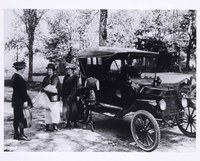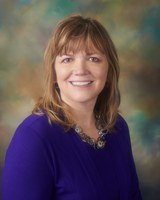Prairie Fare: Exploring the early roots of Cooperative Extension
(Click an image below to view a high-resolution image that can be downloaded)
By Julie Garden-Robinson, food and nutrition specialist, NDSU Extension
I like to peruse historical books, especially books about my food and nutrition profession. Recently, I received a book titled “Ordinary Women Extraordinary Service” from North Carolina Extension and Community Association Foundation. The pictures dated back to 1910.
The book showed my distant predecessors working in Extension and community outreach. The goal of Extension was to “extend” research performed in universities to people throughout the nation. That goal still remains.
Our history at land-grant universities, such as North Dakota State University, goes back to the time of Abraham Lincoln. In 1862, the Morrill Land Grant act was passed while Lincoln was president. NDSU was founded in 1890.
The role of land-grant universities was to provide education in agriculture, home economics, the mechanic arts and other professions. The Hatch Act of 1887 established research programs at state agricultural experiment stations.
In 1890, a second Morrill Act was passed to establish land-grant universities at historically Black colleges.
A few decades later in 1914, the Smith-Lever Act was passed. It created a Cooperative Extension Service that was associated with each land-grant institution. One of the main ideas of Extension was to “sustain a vibrant American economy and democracy.”
In 1994, Tribal land-grant colleges in Native American communities were established.
Extension today is funded with federal, state, county and grant funding, depending on where you live.
Home demonstration agents were well-educated in their disciplines.
Cooperative Extension helped during the flu epidemic in 1917. During World Wars, Extension staff helped people grow enough wheat and other crops to meet demands. They helped establish victory gardens.
They delivered programming in nutrition, food preservation, parenting and a wide range of topics. They taught about water systems. The agents worked with volunteers to extend their outreach.
Extension began reaching youth through the establishment of 4-H clubs. Families learned how to supplement their income by making products. Now we call home-based business the cottage food industry, and we still help entrepreneurs.
Very likely, we all have been touched in some way by these innovations from universities and Extension agencies.
When Extension began, most people lived in rural communities. Now most people live in cities or towns. We have needed to change with the times, but we still deliver research-based information.
As I paged through the book and looked at the North Carolina Extension history, I felt pride in what our early Extension professionals did to help people stay healthy, earn a living and feed their families during trying times such as food rationing during wars.
Some of the photos featured early tomato canning clubs and community-based canneries. They taught people how to make cotton mattresses and how to cane furniture and reupholster old furniture.
We do not teach mattress-making and upholstering anymore, by the way.
The home demonstration agents, who later became “home economists” and then “Extension agents/educators,” probably were all female back in the day. Our discipline is now called “Family and Consumer Sciences” or “Family and Community Wellness,” varying by the state.
Now more males are working as family and consumer sciences agents. We still teach about food preservation, family science, gardening, agriculture and numerous other topics.
As I perused the North Carolina book, many pictures showed women with Model T cars parked in front of homes. They often drove or took trains to deliver their education. They taught people how to use electric stoves, sew clothing and operate wringer washing machines.
The practices of our mothers, grandmothers and great-grandmothers probably were influenced by those early educational opportunities. Extension always has been known for its diffusion of innovations, and that continues today.
In the 1940s, slow cookers, microwave ovens and multifunction cookers were not available. Food was prepared from scratch and often was healthier. They also did not have the array of convenience foods we have now.
I have some 1940s-era U.S. Department of Agriculture cookbooks developed during war times. Here are a few time-tested gems that still can help with good nutrition and stretching our food dollar from the Home Economics Institute in March 1944.
- Plan your meals by the week.
- Add cereals to uncooked meat to make it go farther. Combine leftover meat with dry peas and beans.
- Never overbuy just because food is a bargain. Get only the items you know you can use.
- Use fresh fruits in season.
- Waste not, want not. Avoid serving larger portions than people will eat.
- Try to figure out in advance how much your family will eat.
- Plant a garden. (War-era victory gardens provided healthful food, which could be preserved.)
See www.ag.ndsu.edu/food for more food-related information and the “Ag Hub” at www.ndsu.edu/agriculture/extension for a variety of topics.
Here’s an easy recipe from the 1944 cookbook. I remember helping my mother prepare these in the fall when apples were in season. Recipes were written differently back then.
Baked Apples
Wash sour apples and core without breaking through the blossom end of skin, about two-thirds of the way down from the top of apples. Put in a baking dish and fill cavities with white or brown sugar and cinnamon or nutmeg. Allow 1/2 cup sugar and 1/4 teaspoon cinnamon or nutmeg for eight apples.
Cover the bottom of the dish with boiling water and bake in a 400 F oven until soft. Baste several times with syrup. Add nuts, dates, raisins or currants.
Makes eight servings. The nutritional value will vary based on the size of the apples and the amount of “stuffing” you add.
Julie Garden-Robinson, Ph.D., R.D., L.R.D., is a North Dakota State University Extension food and nutrition specialist and professor in the Department of Health, Nutrition and Exercise Sciences. Follow her on Twitter @jgardenrobinson)
NDSU Agriculture Communication – Sept. 29, 2022
Source: Julie Garden-Robinson, 701-231-7187, julie.garden-robinson@ndsu.edu
Editor: Elizabeth Cronin, 701-231-5391, elizabeth.cronin@ndsu.edu




